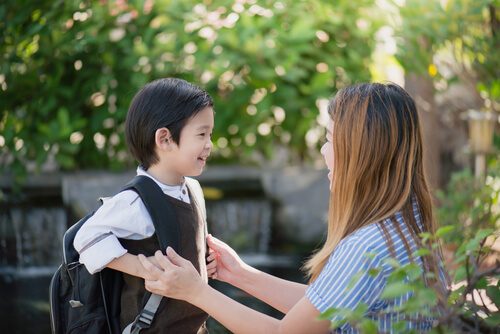The "Jigsaw Classroom," a Return to School Integration


From 6 years old and on, a child’s brain has developed to a point where you can explain things to them about how to not behave badly and how to control themselves. That’s why a child’s school years are one of the best times to create behavioral habits based on peaceful, respectful coexistence.
The first year of school is a challenge for kids
For most kids, the first day of school marks a huge change. After all, they’re not little babies at home anymore. Instead, they’re students that have to take on new responsibilities and duties and learn to play different roles.
One of those, the “student” role, means they have to learn how to interact and form relationships with other kids from their same age group and culture, or kids outside their age group and culture. On top of that, they get new role models and guidelines they use to question and judge themselves and everything around them.

The new social reality
Along with their changing attitudes and new stimulation for their brains, just imagine what a classroom with mixed religions, customs, skin colors, and learning backgrounds could mean for them. But if they adapt to it from a mistaken point of view, things could get very complicated.
More migration means that a monocultural society will turn into a multicultural one. Hence the importance of realizing that this can actually be a great opportunity to teach kids about tolerance, coexistence, and social and cultural respect.
This is where the jigsaw classroom technique comes in. Invented by Eliot Aronson, it’s had very good results in groups with different education levels and learning styles.
Beneficial, effective, and easy to implement
The “jigsaw classroom” is a cooperative learning technique with a goal of strengthening the main structure (the classroom) through constant interaction and links between the pieces (the kids). It has a dynamic and functional, yet simple, methodology. Basically, it works by creating groups where classmates have to work together on a task to reach a common objective.
The strategy sees each kid as a key part of a group that only makes sense if everyone communicates, collaborates, and has the same goal. While there are a lot of different statuses kids might have in school (the popular ones, the marginalized ones, the “rejects”, the “rebels”) these roles fade away in the jigsaw classroom.
The structure of the “jigsaw classroom”
The roots of prejudice in kids usually come from influences outside of the school’s control. But educators are the ones who build on top of the foundation built at home. In addition, they have to be effective cultural mediators. So how do you structure this technique to make sure it works perfectly?
- First, explaining the technique: it shows the kids what it is, what their role is, and what the goal is. It also motivates them and teaches them basic social skills for group interaction. The teacher must emphasize how every student needs to cooperate and row the boat in the same direction.
- Then, forming the “mothership” groups: these should be made up of 4 or 5 students from different cultures. The teacher should divide the learning objective into as many categories as there are people in the group. For example, in elementary school language education, one student can look up synonyms, one antonyms, one can change the order of a sentence, and another can figure out the “out of place” word…
- Next, forming the “experts” group: students with the same category get together in this group, where they debate and express themselves. Picking up from the last example, one experts group would only look up the synonyms for a word, while another group would just look up the antonyms, and so on.
- Finally, reunion with the “mothership” group: each expert will go back to their mothership group and explain the results and what they’ve learned to the rest of their group.

Advantages of the jigsaw technique
There are many advantages of the “jigsaw classroom” compared to other conventional methods for improving relationships between students from different ethnic backgrounds.
The jigsaw classroom technique…
- helps students think critically and develop emotional intelligence about cultural things. That said, they might not be mature enough yet for it to truly wake up their moral side.
- confronts them with different points of view while keeping in mind each student’s ideological and cultural differences. It boosts their skills too.
- encourages empathy and positive personal contact between students. It also develops their sense of civic duty and solidarity.
- ensures the development of social skills for interacting with their group and expressing their point of view in a non-assertive, non-coercive way.
- fosters intelligence and creativity because it teaches them new intellectual skills.
- teaches them to learn independently: as kids get older, it’s good to give them a bit of independence. That way they can make decisions for themselves and build up their security and confidence.
To conclude, the “jigsaw classroom” is a cooperative teaching methodology that’s been very effective at promoting an environment of peaceful coexistence at school, no matter how old the students are.
It helps them settle into behavioral habits based on tolerance and mutual respect. It fosters intellectual and cognitive development connected to collaboration and social practice.
This text is provided for informational purposes only and does not replace consultation with a professional. If in doubt, consult your specialist.








